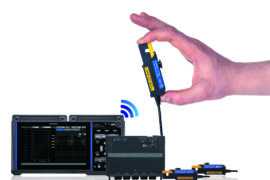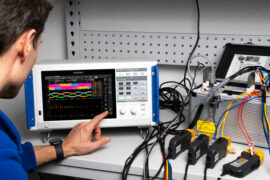If your power inverter measurements show an efficiency of more than 100%, or the measured values sound too good to be true, it could mean that either you found the holy grail, or -more likely- that there is a measurement error caused by phase shift. With the introduction of SiC and GaN semiconductors in inverter drives for EVs or DC/DC converters, the switching frequencies have increased considerably, and this makes electrical power measurement more challenging.
It may have happened to you that you have measured an efficiency of more than 100% of the SiC based inverter that you have been evaluating recently. And your first thought might have been that you have found the way to create energy with your inverter, but it is more likely that this was due to incorrect power measurement caused by a measurement error in the phase difference between the voltage and the current. This is not uncommon if your power measurement system is not ready to reliably measure high frequency applications. Your power analyzer is of course still good enough to evaluate the efficiency of inverters with a switching frequency of up to 10kHz because at this frequency level the phase error has a smaller impact. But at switching frequencies up to 100kHz for SiC-based applications and even above 1MHz for GaN-based applications these power analyzers will not give accurate and repeatable results.
Traditional power analyzers, utilizing internal measurement shunts for current measurement are not suitable for measuring current at high frequencies because the inductive properties of the shunts have an influence on the amplitude and phase accuracy at these high frequencies. This is even more noticeable when higher currents need to be measured and external zero flux current sensors are required. The sensors as such may have sufficient accuracy but these current sensors are typically produced by a different manufacturer than your power analyzer and they are therefore not optimized for each other.
New measurement methods – designed for SiC and GaN
The HIOKI solution on the other hand, always combines a HIOKI power analyzer with external HIOKI zero flux current sensors, which are designed for accurate power measurement and that have unique features to optimize high frequency power measurement. The most important feature the phase shift compensation function to reduce the influence of phase errors.
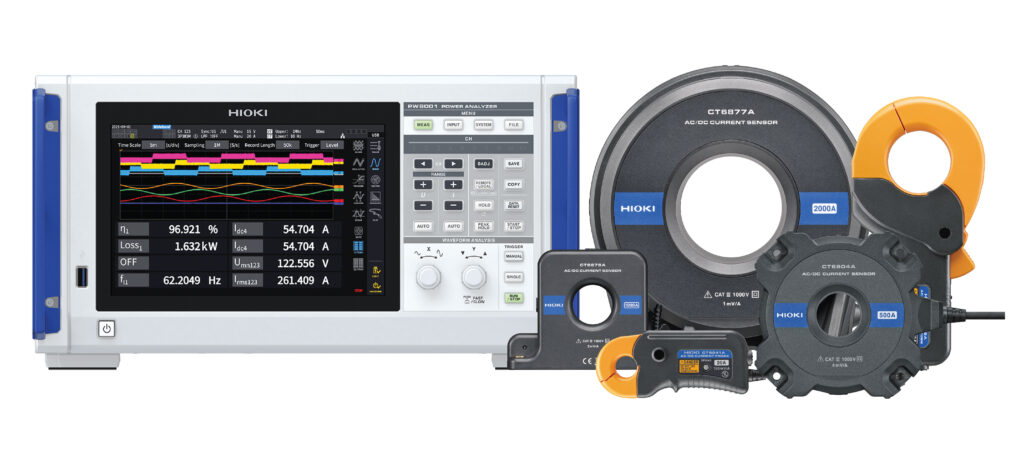
For a phase shift compensation function to work properly you need two things:
- A power analyzer making the correct phase adjustment
- A current sensor with a known phase shift
A good way to explain the compensation in the power analyzer is by comparing it to the “deskew” function of an oscilloscope: If two different signals arrive at the oscilloscope at different times due to latencies then the “deskew” function lets you align those signals by compensating the latency with a fixed time value.
The phase shift compensation is basically the same thing because the phase error is directly related to the time delay of the current sensor. As an example, here is how this delay looks for a HIOKI CT68xxA series current sensor. The time delay is shown in nanoseconds against the frequency:
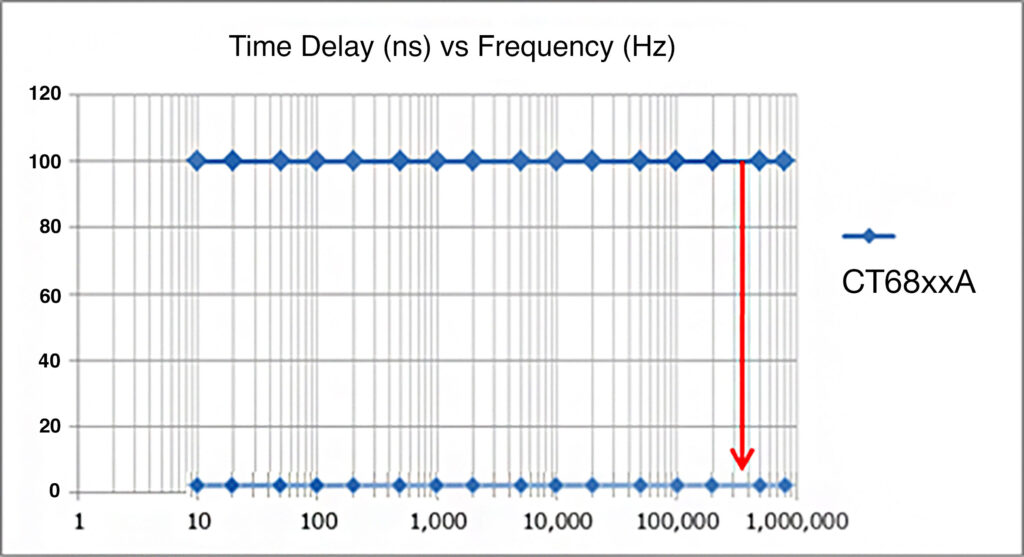
100ns delay at 100Hz doesn’t have the same impact as 100ns delay at 1MHz. This becomes clear when transforming the above time delay into phase delay values described in degrees:
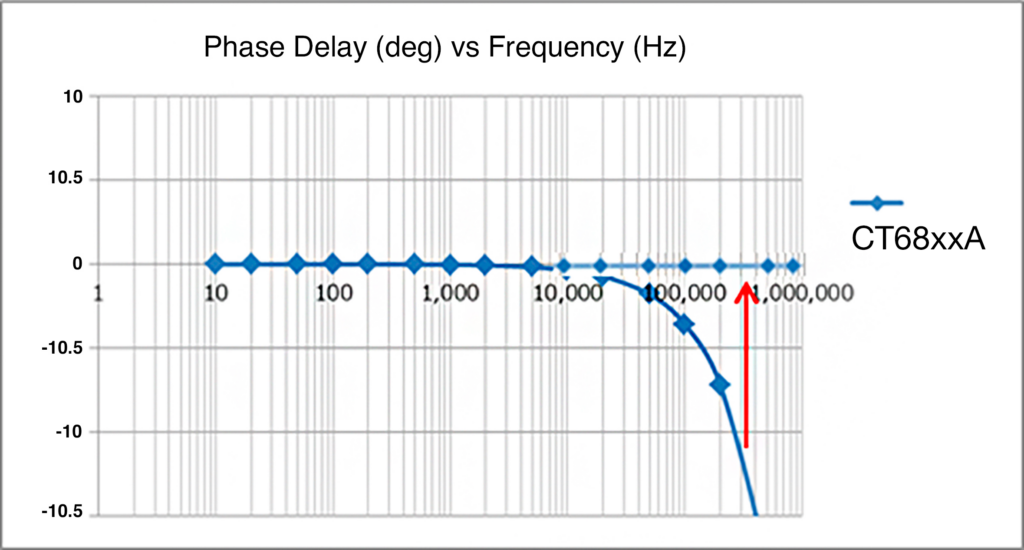
To address this phase delay, you need a current sensor where the time delay is the same regardless of the frequency. This is the case with the HIOKI current sensors that also communicate the value of the phase delay automatically to the power analyzer. So, coming back to the “deskew” function you only need to connect the current sensor to the PW8001 power analyzer and the phase error will be compensated automatically.
This is one of the characteristics that make HIOKI sensors unique – but it is not standard for all current sensors on the market. Here is what would happen with a typical current sensor:
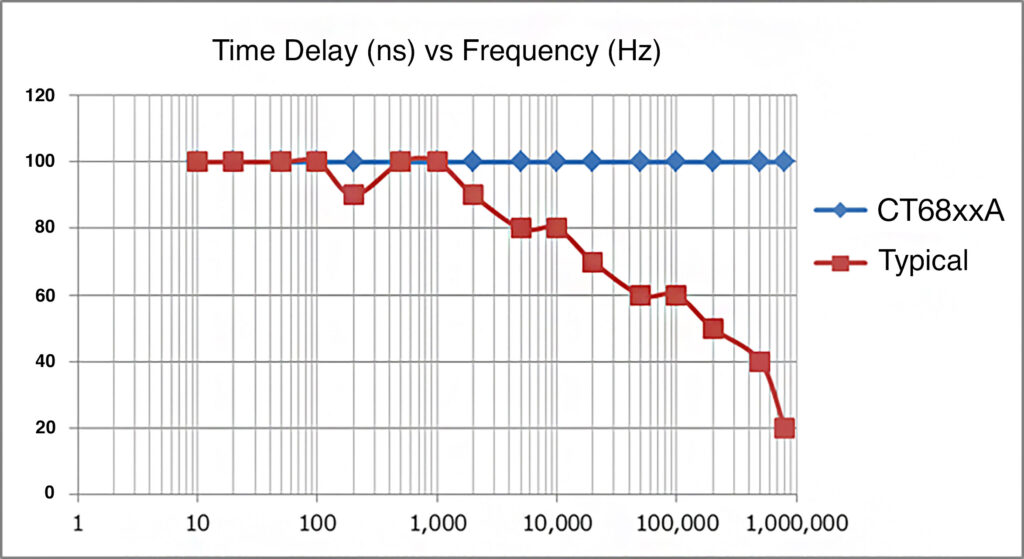
A sensor where the time delay values are different depending on the frequency will make the phase shift compensation in a power analyzer almost impossible. Because which value do you use as your “deskew” parameter?
Further reducing the phase error
Another feature that makes HIOKI current sensors unique is that the position of the wire core does not influence the phase delay:
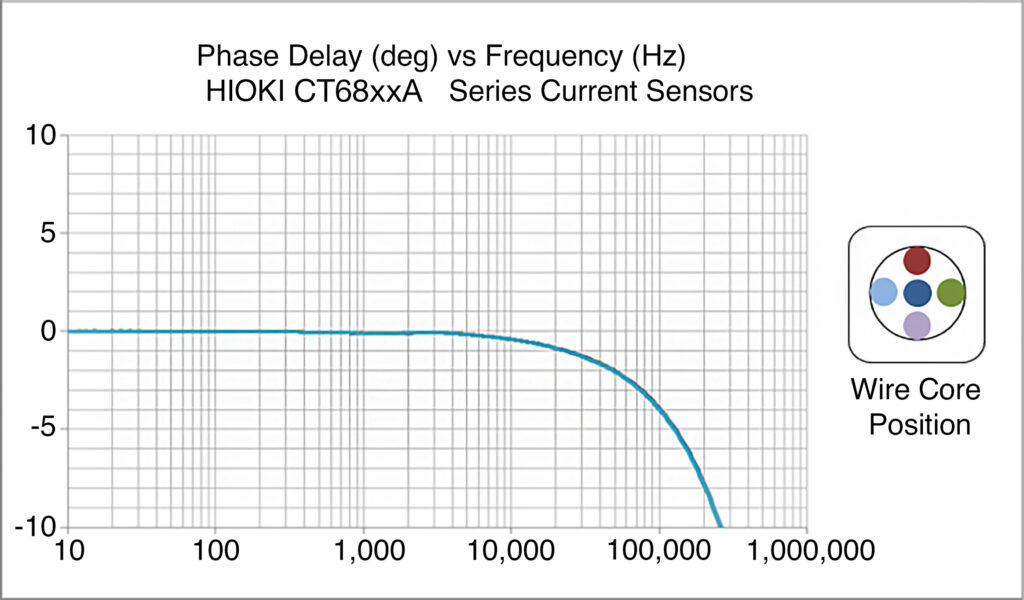
The reason why you can only see one single line in the chart is because the phase delay curves for all five measurement positions are the same, which does not leave room for errors. Again, this is not a standard feature for current sensors. Typically, the position of the wire core within the sensor will affect the phase error as you can see in the below graph:
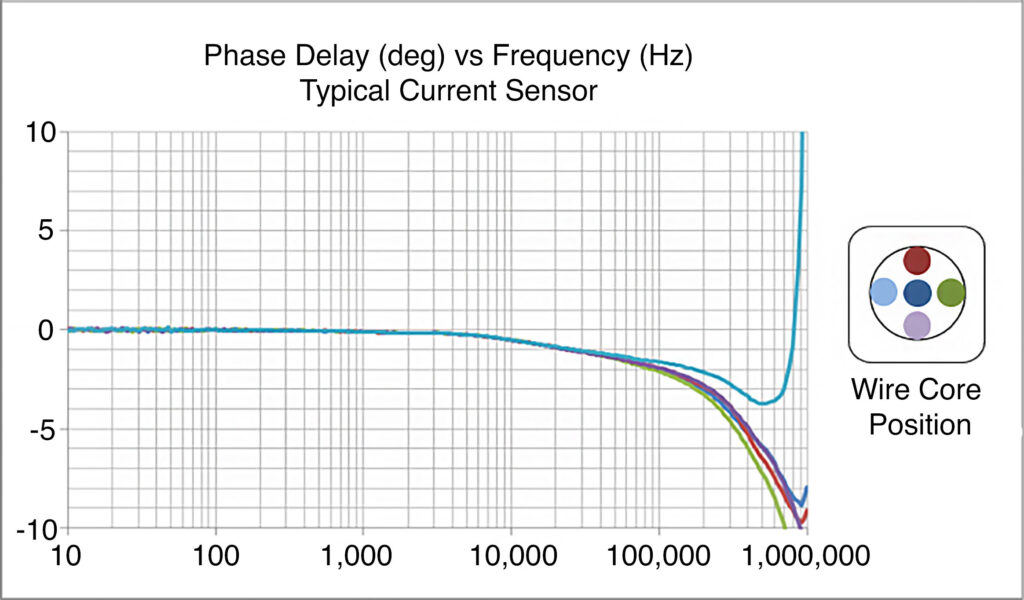
Optimal for applications up to 5kV
If you are not only working with high frequency but also higher voltage applications, there is a solution that further covers this area: a highly accurate high voltage divider. With the capability to precisely measure power up to 5 kV, it represents a significant advancement in accuracy compared to existing solutions utilizing differential probes. This is particularly beneficial for high voltage and high frequency applications involving SiC and GaN semiconductors because of its 4MHz bandwidth and a known phase error which makes it possible to compensate for the phase error in the power analyzer.
The key to purposeful measurements
Repeatability of measurement results is essential to draw conclusions. HIOKI Engineers at our HQ in Japan have measured the efficiency of a SiC based inverter using the PW8001 Power Analyzer in combination with the 50A AC/DC current sensors CT6872 over a period of 30 seconds. The switching frequency of the SiC semiconductors was 50kHz, and the motor was at a constant speed of 1000rpm. The integration time for the measurement was set to 200ms and the motor current in this experiment was approximately 2A. The graph below shows the excellent stability of the measurement:
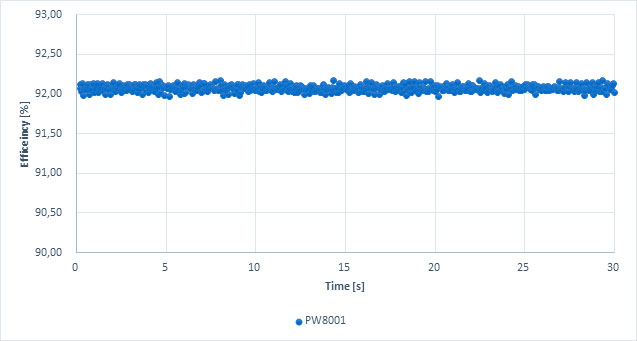
You can see that the difference between the maximum result and the minimum result over the 30 seconds was less than 0.2%. This experiment demonstrates that even at low currents this setup delivers excellent repeatability, which is key in the development stage because it enables to identify even small efficiency gains due to changes in the design. However, such accurate results can only be achieved with an effective phase shift compensation.
Under the same test conditions two well-known suppliers of power measurement systems have been tested and the outcome is shown in figure 8:

In this case, the repeatability of the measurements is a lot worse. For both systems the difference between the maximum and minimum efficiency is more than 1%. This makes it very hard for engineers to conclude if the changes they make in their designs have an effect or not. For instance, even if you measure an increase in efficiency of 0.9%, this might simply be caused by the poor measurement repeatability, and you might not have achieved an increase in efficiency after all.
A measurement system from one source
For an effective phase shift compensation, you need the combination of a power analyzer with a phase shift compensation function and a current sensor with stable and known time delay characteristics at high frequencies. The PW8001 Power Analyzer even features automated phase shift compensation, allowing it to automatically recognize the current sensor and adjust the phase compensation accordingly using the data provided by the sensor.
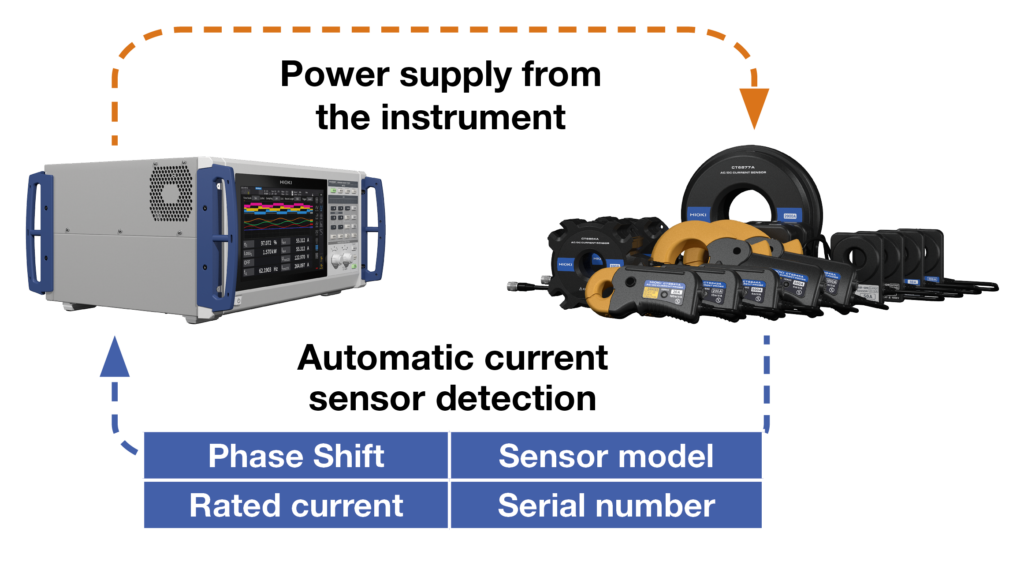
HIOKI has been designing and producing current sensors for power measurement for many years and time delay characteristics have always been a design focus for our engineers. On the other hand, zero flux current sensors from other manufacturers are typically designed for accurate current sensing where time delay characteristics are less important. Therefore, HIOKI power analyzers together with HIOKI zero flux current sensors are the perfect combination for your wideband power analysis applications from DC to high frequency – an accurate power measurement system from one source.





